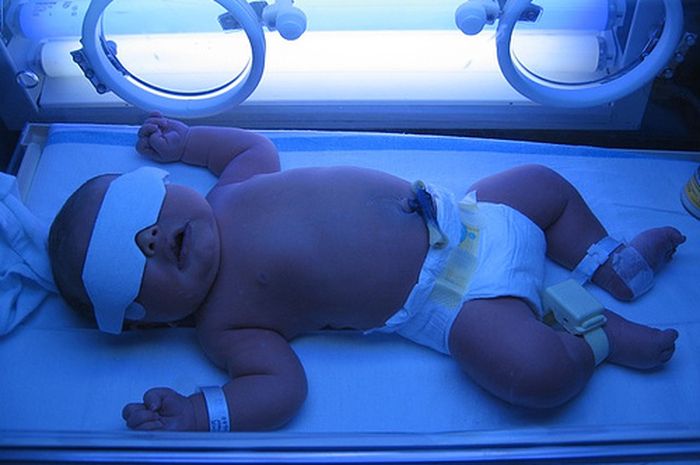In Indonesia, the number of newborn jaundice cases is higher than in other countries. Medically it is often called hyperbilirubinemia. Infants with hyperbilirubinemia have bilirubin levels> 20 mg/dl. They certainly cannot be treated with sunlight or standard phototherapy lights. Phototherapy is the only method of reducing unconjugated bilirubin levels. Nowadays, phototherapy is synonymous with pharmacotherapy due to the different doses in phototherapy such as standard intensity (10 microwaves / cm2 / nm) and intensive (> 30 microwaves / cm2 / nm) in reducing bilirubin levels.
This research has been carried out in various developed and developing countries. The researches show that there are many sub-optimal phototherapy practices. This condition is dangerous because phototherapy to reduce bilirubin levels becomes ineffective in preventing disability. Furthermore, too aggressive phototherapy can harm the infant and cause short-term and long-term side effects.
The effectiveness of phototherapy is influenced by various things, including the distance between the phototherapy device and the infant. The high rate of hyperbilirubinemia cases in Indonesia is caused by sub-standard phototherapy. For this reason, researchers of Universitas Airlangga collected data from 17 hospitals in Java. This research was conducted from December 2016 to August 2017. The researchers also measured the distance between lights and infants and evaluated the effect of curtain use on the intensity of phototherapy. Measurements are made at five points representing the head, chest, abdomen, knees, and legs. The researchers used a device donated from the Netherlands, Biliblanket meter II.
From this study, it was found that almost 50% of hospitals in Java have the intensity of phototherapy lamps below the recommended therapeutic dose threshold, while only 30% of hospitals have intensive phototherapy lights. This is certainly very dangerous because the hospital does not know the ability of the phototherapy light it has before measuring it. So if the hospital accepts infants with severe hyperbilirubinemia, the hospital will fail to prevent complications such as permanent motor and deafness defects. The distance between the light and the baby also determines the intensity of the phototherapy. Practices in Indonesia indicate the use of distances that exceed the manufacturer’s recommendations. This poor practice reduces the intensity of the therapy.
The practice of using curtains was also highlighted by the research team. The American Academy of Pediatrics recommends the use of reflective material. However, some hospitals are still using curtains with dark colors such as black and dark green. After measuring it with an intensity meter, there was a significant decrease in the intensity of the lamp, which was covered by dark curtains. This article is expected to become a discourse for health practitioners in providing phototherapy in line with international standards. So the disability rate due to severe hyperbilirubinemia can be prevented by effective phototherapy.
Author : Mahendra Tri Arif Sampurna
Details of this research available at:
https://bmcpediatr.biomedcentral.com/articles/10.1186/s12887-019-1552-1





